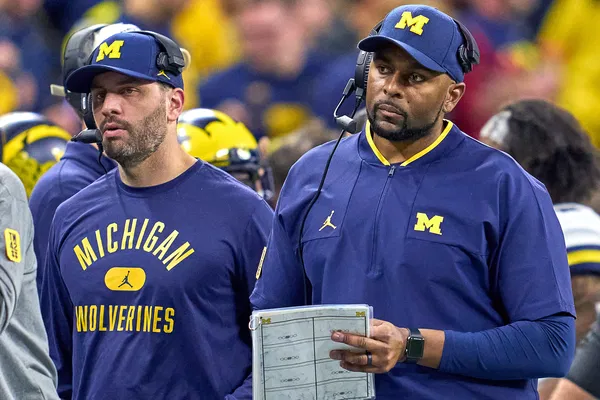Sherrone Moore’s Michigan Gamble: How a $20M NCAA Ruling Could Shake Up the Wolverines’ Future
Sherrone Moore’s first season at the helm of Michigan football ended with an 8-5 record—a respectable showing, but one that has left fans divided. Some see it as a solid foundation for future success, while others expect more from a program that just won a national championship under Jim Harbaugh. But as the Wolverines turn their focus to the 2025 season, a major financial dilemma looms over Ann Arbor.
A new NCAA settlement rule has thrown a wrench into Michigan’s game plan, forcing schools to allocate 22% of their Power 4 conference revenue to athletes—an estimated $20 million for the Wolverines. While this is a win for players, it’s a potential nightmare for coaches trying to balance NIL deals and roster retention. The big question: Can Michigan afford to keep its top-tier talent while adhering to these new financial constraints?
Michigan’s NIL Power Play: A Double-Edged Sword?
Michigan’s aggressive NIL strategy has already made waves, especially with the blockbuster $12 million deal for No. 1 quarterback recruit Bryce Underwood. That’s a massive investment in one player, and with the new $20 million cap in place, it raises a crucial question—will there be enough left to attract and retain other elite recruits?
Despite these financial hurdles, national analysts believe Michigan is still primed for dominance. JD PicKell of On3 placed the Wolverines at No. 6 on his list of programs best set up for long-term success, boldly stating, “NIL is going to be a weapon for them in the future. They are going to have a loaded gun when it comes to NIL.”
This newfound aggressiveness is no accident—it’s the direct result of a strategic shift in leadership. Michigan brought in Sean Magee as its general manager, a move that has completely overhauled its recruiting approach. The results speak for themselves: The Wolverines landed their best recruiting class since 2017, securing a Top 6 ranking in the 2025 cycle. Blue-chip prospects like Underwood, Andrew Babalola, and Shamari Earls are proof that Michigan’s NIL game is stronger than ever.
Will Michigan’s NIL Success Hold or Backfire?
While Michigan has flipped elite recruits and outbid rivals like Auburn and Florida for top talent, sustainability is the real challenge. Can the Wolverines continue to win these battles with a $20 million budget looming over them?
David Pollack raised this concern during a recent livestream, saying, “They spent over 12 million dollars to get him [Underwood], which is crazy. But it’s also something that will never happen again. Because as of July 1st, you’ll have a $20 million dollar cap.”
The warning is clear—if Michigan can’t stretch its NIL funds wisely, they could face a major crisis. We’ve already seen high-profile NIL disasters, like Jaden Rashada’s messy recruitment with Florida and Matthew Sluka’s abrupt transfer from UNLV due to NIL fallout. If Michigan isn’t careful, they could face a mass exodus of players chasing better financial opportunities elsewhere.
The Pressure Is on Sherrone Moore
Sherrone Moore isn’t just tasked with coaching Michigan—he’s also navigating one of the most turbulent financial shifts in college football history. His ability to manage NIL resources, keep top recruits satisfied, and maintain locker room unity will determine Michigan’s fate in the coming years.
If he gets it right, the Wolverines will remain a powerhouse, competing for national titles. If not, they could find themselves watching their best players—and championship hopes—walk right out the door.
The stakes have never been higher. Can Michigan handle the pressure? Or will this $20 million dilemma be the beginning of a new challenge in Ann Arbor? Only time will tell.
